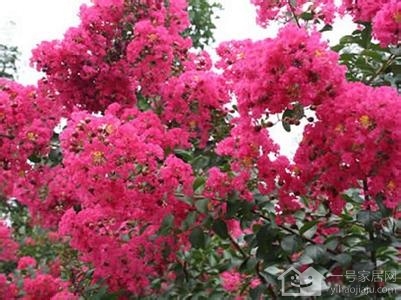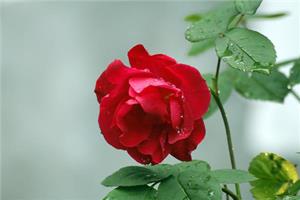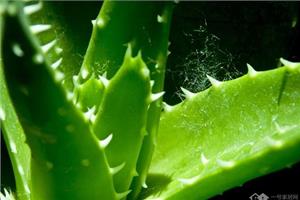The cause of the yellowing of the leaves of the hundred-day red
Bairihong belongs to shrub plants, and it is a relatively few flowering shrub species, which has high ornamental value and breeding value. It is generally found in courtyard decoration and landscape design, but now it can also be cultivated in pots.

First, the mode of reproduction of hundred-day red
Sowing and propagation: seeds are collected from November to December. Seeds with high maturity should be harvested. After the seeds are collected, the pericarp is removed, slightly dried and stored in a container. In the second year and March, it can be sowed or strip sowed on the seedbed, and after sowing, it is covered with a layer of fine soil with a thickness of no seeds. In order to maintain a certain temperature, it can cover a small arch shed.
Cuttage propagation: hardwood cuttings should be cut into 15cm cuttings with 1-year-old stout branches, which can be carried out from mid-late March to early April before the branches germinate. The sturdy semi-lignified new branches of the year were cut from July to August, and cut into cuttings around 9cm. The top cut was flat, leaving 2-3 leaves, and the lower cut was horseshoe-shaped, which was beneficial to rooting, and the cutting depth was up to 3~4cm.
Plant propagation: the tillers and seedlings of the plant were dug out with roots from March to the beginning of April, or in autumn, and the new plants obtained were replanted.
Striping propagation: mainly air striping method, carried out in the growing season, select 1 to 2 branches, cut the branches with a grafting knife in March to April, cut the branches in a ring, reach to the xylem, dilute the rooting powder and apply it to the engraved site. After drying, cover the engraved area with a plastic bag full of loose garden soil, fasten it tightly after watering, check the survival and rooting 30 days later, cut off and plant.
Second, the culture method of hundred-day red
Soil: the red red is strong, easy to cultivate and lax on the soil, but it grows best in deep and fertile sandy loam.
Sunshine: hundred-day red sex like light, should be planted in the leeward to the sun or under the south wall root of the courtyard, insufficient light not only plant flowers or not blossom, or even grow weak, branches and leaves are small.
Watering: hundred-day red is resistant to drought and afraid of waterlogging. It can be watered once a year before spring germination and after falling leaves in autumn. Usually, if it is not too dry, there is no need to water. Waterlogging should be done well in the rainy season to prevent water rotting roots.
Fertilization: hundred-day red can be fertilized every year after defoliation in winter and before sprouting in spring, such as human feces, urine or sesame sauce residue, which can make the plant grow vigorously and the flowers are big and colorful in the coming year.
Pruning: pruning after falling leaves in autumn, cut off the long branches, dry and withered branches, drooping branches, disease and insect branches, slender branches and endophytic branches, and cut off the lateral branches in the lower part of the plant trunk in time during the young tree stage, so that the upper part of the trunk can get sufficient nutrients and form a good crown.
Insect pests: Bairihong is vulnerable to aphids, shell insects, diamondback moths and leaf rollers during the growing period. if it occurs, it can be sprayed with dimethoate EC 1000 times to kill shell insects and aphids, and 1500 times of dichlorvos EC to kill stinging moths and leaf rollers.
The reason for the yellowing of red leaves in a hundred days
Life aging: one of the reasons for the yellowing of hundred-day red leaves is normal metabolism. For a period of time, there will be some leaves yellowing and falling after metabolic aging in the new city. There is no need to worry about this situation. As long as you do a good job in daily maintenance and management.
Too much watering: hundred-day red is resistant to drought, if the soil is too wet, if the water is too long, the roots may be damaged by lack of oxygen, nutrients can not be transported to the leaves, resulting in yellowing. At ordinary times, if it is not too dry, there is no need to water, and the rainy season should do a good job in drainage to prevent the water from rotting the roots.
Powdery mildew damage: powdery mildew is a worldwide ☆ prohibited ☆ disease, the host is very widespread, hundred days red is one of its important infringing objects. The leaves of crape myrtle often turn yellow and fall off after the onset of powdery mildew, which directly affects the tree potential and ornamental effect. Pay attention to daily maintenance and improve plant disease resistance. during the growing season, you can spray 1000 times of 80% Dysen zinc wettable powder, or 1000 times of methyl topiramate, or 1500 times of carbendazim EC, and 50% carbendazim wettable powder.
To avoid hundred-day red disease infected with insect pests or the main means to rely on daily maintenance, such as frequent ventilation, avoid stagnant water in the basin, and so on, so that a healthy and beautiful hundred-day red plant can be cultivated.
Related
- Wuhan Hospital Iron Tree Blooming Result Was Instantly Frightened by the Gardener Master
- Which variety of camellia is the most fragrant and best? Which one do you like best?
- What is the small blue coat, the breeding methods and matters needing attention of the succulent plant
- Dormancy time and maintenance management of succulent plants during dormancy
- Minas succulent how to raise, Minas succulent plant pictures
- What are the varieties of winter succulent plants
- How to raise succulent plants in twelve rolls? let's take a look at some experience of breeding twelve rolls.
- Attention should be paid to water control for succulent plants during dormant period (winter and summer)
- Watering experience of twelve rolls of succulent plants
- Techniques for fertilizing succulent plants. An article will let you know how to fertilize succulent plants.



